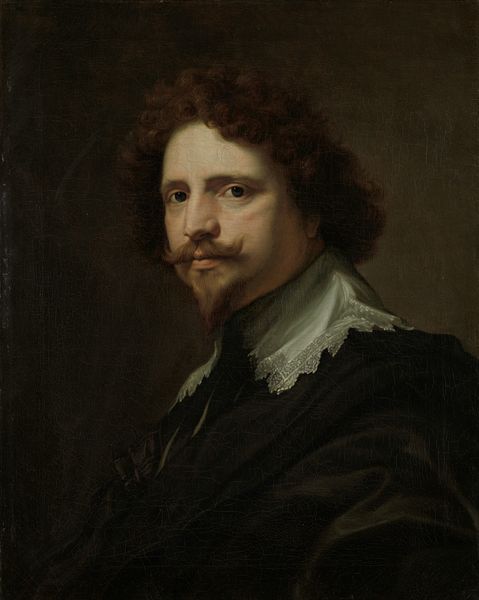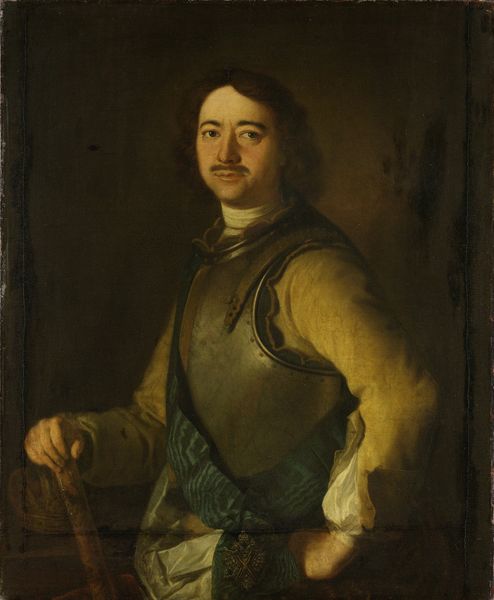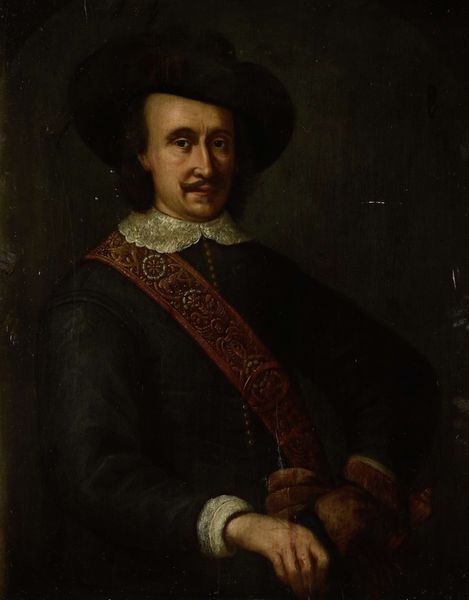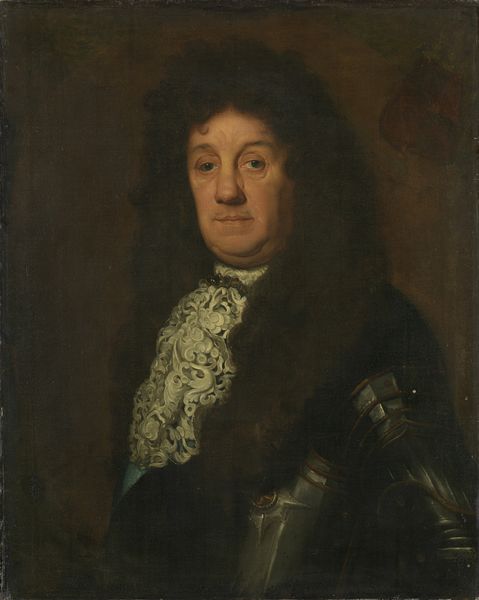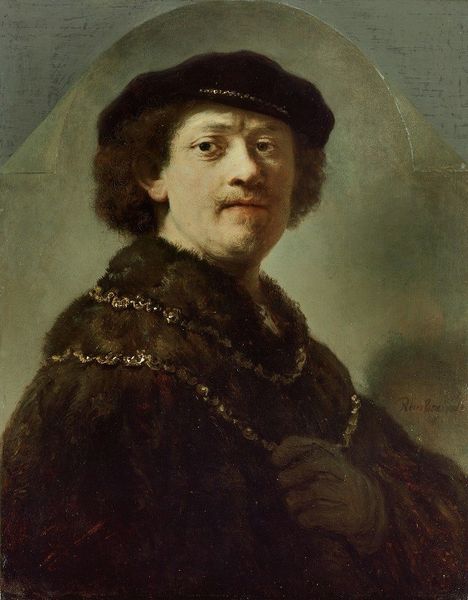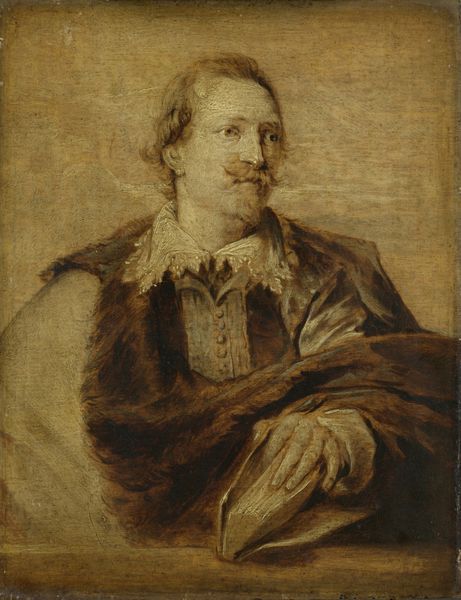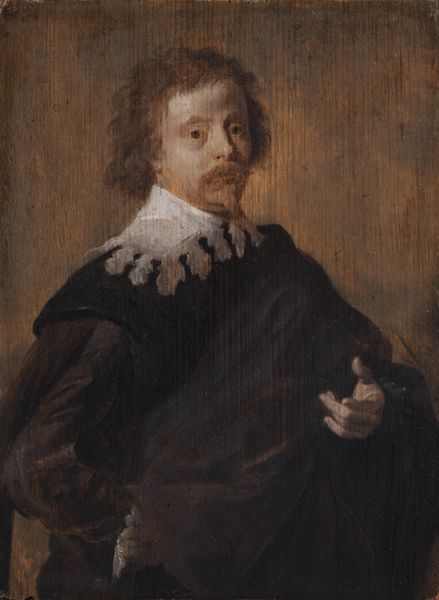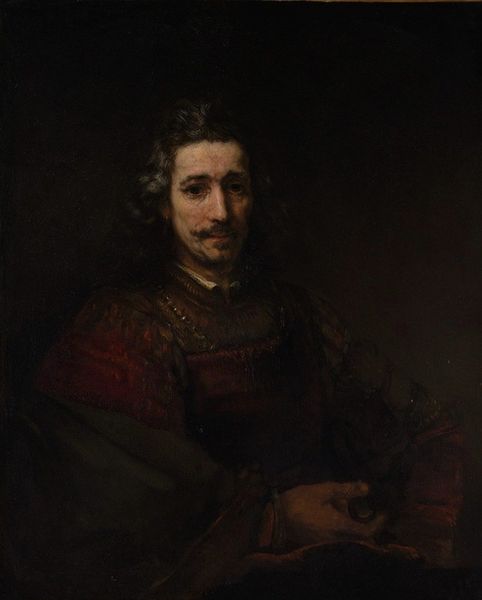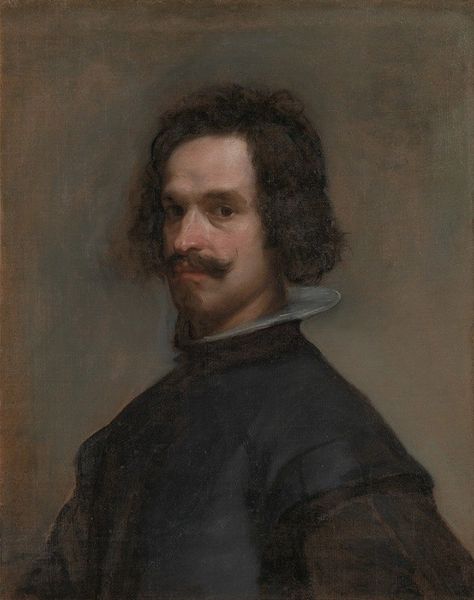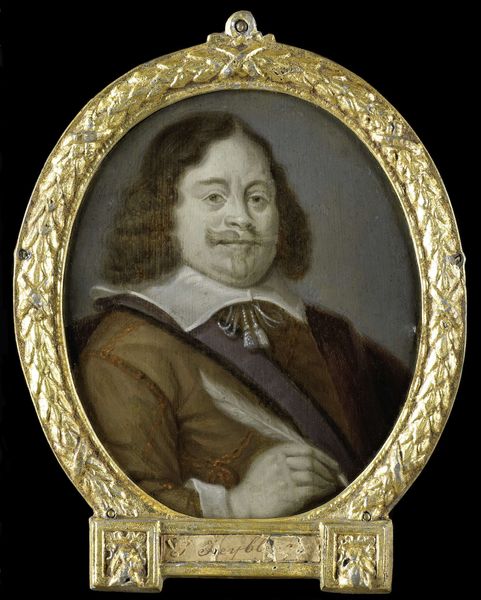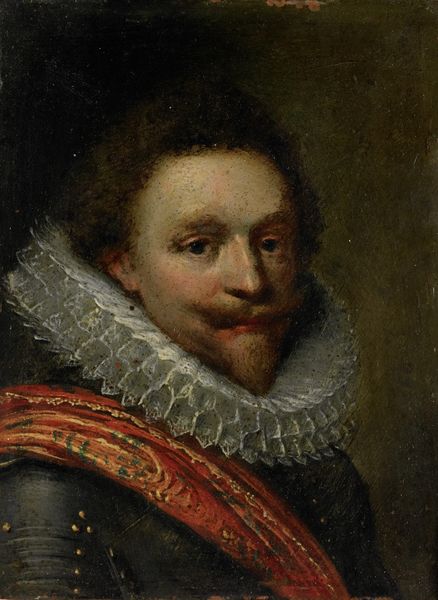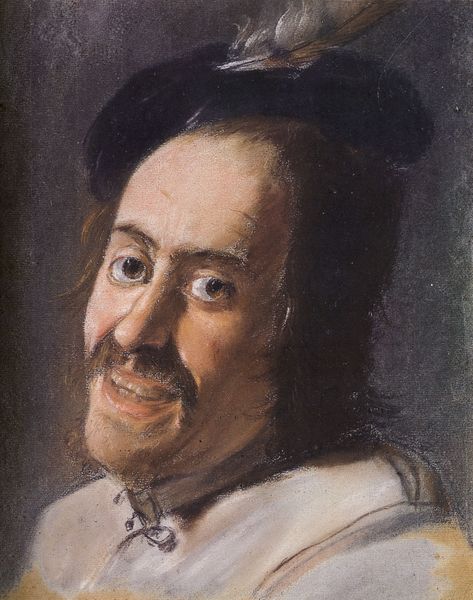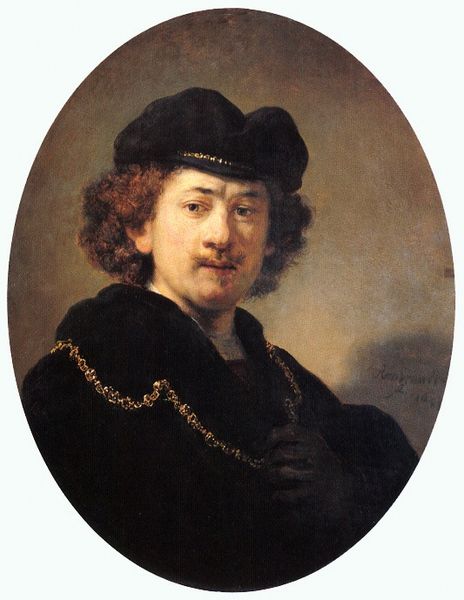
oil-paint
#
portrait
#
baroque
#
portrait image
#
dutch-golden-age
#
portrait
#
oil-paint
#
male portrait
#
portrait reference
#
portrait head and shoulder
#
portrait drawing
#
history-painting
#
facial portrait
#
portrait art
#
fine art portrait
#
digital portrait
Dimensions: height 21 cm, width 17 cm, depth 7.2 cm
Copyright: Rijks Museum: Open Domain
Editor: Here we have a self-portrait of Rembrandt van Rijn, painted sometime between 1640 and 1800, using oil paint. The mood is introspective, maybe a little melancholy. How do you see this piece? Curator: Considering its materiality and historical context, I find it less about melancholy and more about a conscious construction of identity. It's oil paint, yes, a pigment derived from the earth, but also meticulously layered by a craftsman acutely aware of its social value. Editor: Social value? Curator: Absolutely. Rembrandt wasn't just painting himself; he was participating in a market, creating a commodity. The texture of the paint, the impasto visible in the light catching his face – that’s labor made visible. Think about the pigments themselves – where did they come from, who ground them? How does the use of a chain fit into the image's larger message of status, commodity and belonging? Editor: So, you're saying the visible brushstrokes and the costly materials are as important as the man himself? Curator: Precisely! This portrait is a product of its time, a testament to the burgeoning art market in the Dutch Golden Age, a society transitioning rapidly towards early capitalism. Every brushstroke is laden with social and economic significance, think of how far those raw materials had to travel for one person to create art of another person? It’s more than just a face, it’s about labor and economy and material processes! Editor: I hadn't considered it that way. So much is hidden within the making of the artwork itself. Curator: Indeed. Considering the portrait as a material object helps us move beyond a simple appreciation of artistic skill and understand its role in the wider world. Editor: This definitely makes me want to reconsider other artwork in terms of materiality and manufacturing! Curator: A richer understanding follows!
Comments
No comments
Be the first to comment and join the conversation on the ultimate creative platform.
